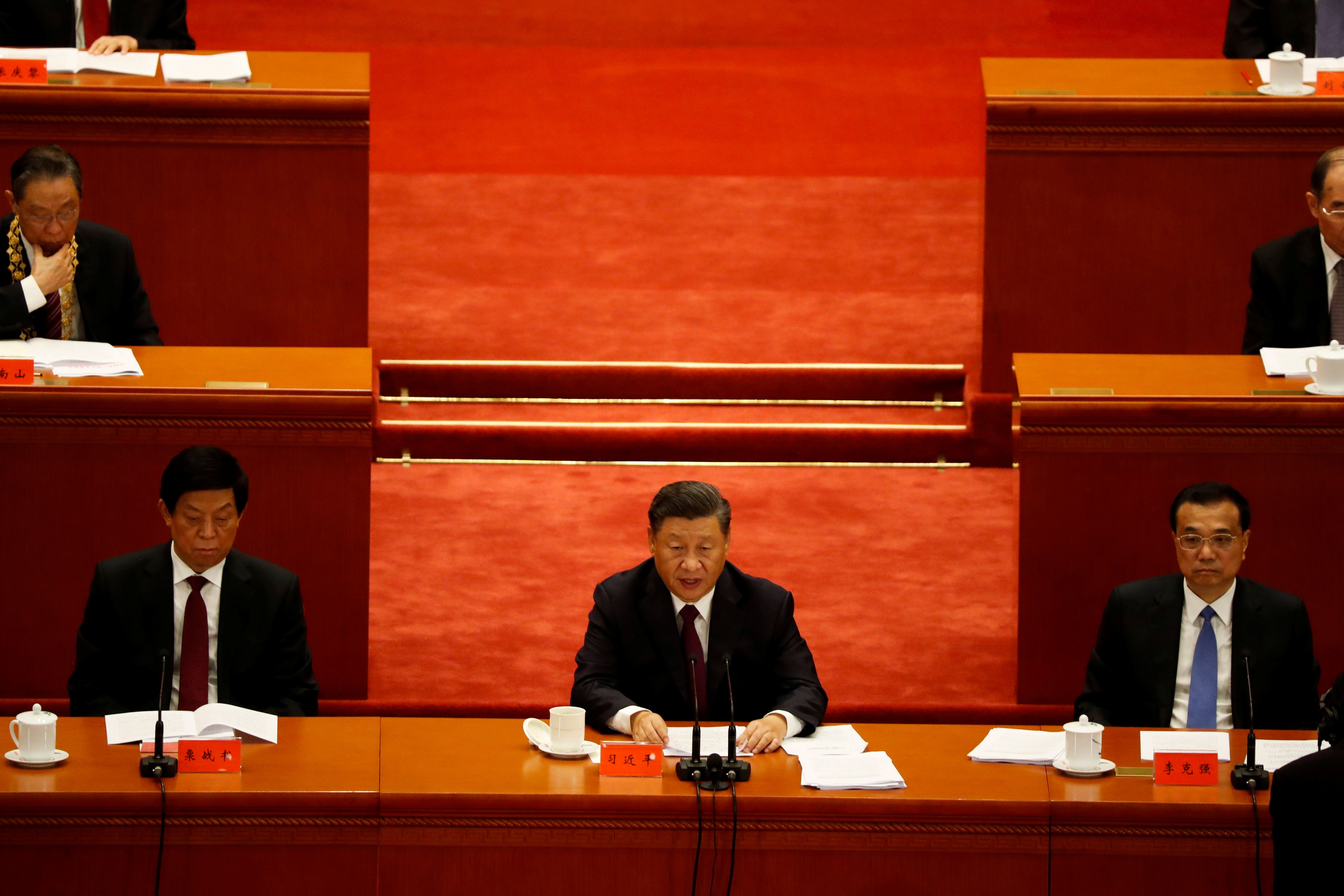Perspectives on China’s Policy towards Central Asia

The Importance of Central Asia to China
Central Asia was emphasized during the inauguration of the BRI by Chairman Xi Jinping in Astana in 2013 (then known as the Economic Belt of the Silk Road). Since then, there has been an increase in China’s involvement in Central Asia, initially economically, then militarily.
China’s economic goals in the region are to ensure sales markets, develop transport corridors for Chinese exports, and ensure sources of energy supplies (mainly Turkmen gas). Central Asia accounts for less than 1% of Chinese trade and is primarily of transit importance for China under the BRI. In addition, China is committed to the development of its western provinces through economic cooperation with its neighbours. This is related to goals such as security, for example, the stabilisation of the region directly bordering China and limiting the influence of other external actors, including the U.S. or India. The format of China’s cooperation with the countries of Central Asia, apart from bilateral relations, is the Shanghai Cooperation Organization (SCO), which acts as a forum for consultations between China and Russia on policy matters with countries of the region.
Central Asia is also important to China in terms of security due to its direct vicinity to the Autonomous Xinjiang Region, which is part of China and as much as 60% is inhabited by Muslim minorities (Uighurs, Hui, and Kazakhs), repressed systemically by the PRC. The largest concentration of Uighurs, apart from China, is in neighbouring Kazakhstan. China perceives the support of the diaspora’s separatist tendencies as a threat and the possibility that other countries in the region will claim to represent Uighurs and protect their rights. While these countries strive for good relations with China, in order to calm public sentiment, they are periodically forced to undertake diplomatic interventions to defend minorities repressed in China. The activity of regional terrorist groups (including the Islamic Movement of East Turkestan) also remains a challenge to China’s security.
China’s Policy Instruments
The country is the most important economic partner to other Central Asian countries, and it accounts for about 22% of their exports, 38% of their imports and about 21% of direct foreign investment in the region. China’s recent economic problems because of the COVID-19 pandemic weaken its economic ties with foreign countries, including Central Asian states. In the first half of 2020, they led to a collapse in Chinese trade with the countries of the region (e.g., -1.5% with Kazakhstan and -53% with Kyrgyzstan compared to the same period in 2019), but in the long term, they will strengthen China’s economic influence in the recession-hit Central Asian states more susceptible to Chinese influence.
China’s instruments of influence in the region include deepening imbalances in trade, tactical infrastructure investments under the BRI, and loans increasing the debt of the region’s countries to China (about 50% of Kyrgyzstan’s and Tajikistan’s foreign debt is with China). One of the elements of these activities is strengthening the privileged position of Chinese enterprises on these Central Asian markets (e.g., through tax breaks, mining concessions, public contracts) in the construction, energy, telecommunications, and mining sectors (including the extraction of precious and rare metals).
China uses the deepening economic dependence of Central Asian states as an instrument to prevent them from criticizing it (e.g., for its repression of Uighurs) and influencing the decisions of the governments of the region’s states. This has included territorial assignments to China by Kazakhstan in 1996, Kyrgyzstan in 1998, and Tajikistan in 2011 of territories considered by the former as historically belonging to it; partial restoration of these areas took place under economic and political pressure from China. In the case of Tajikistan, it was part of the Nagorno Badakhshan region, an area of more than 1,000 km2, rich in gold, uranium, and metal ores. China has two military bases in the region, one in Tajikistan (in Nagorno Badakhshan) and in Afghanistan (in the Wakhan Corridor, near the border with Tajikistan). These perform reconnaissance functions in the border area and conduct radio-electronic intelligence. Their activities are supported by Chinese private military companies active in the region whose task is to protect the Chinese military bases, the western border of China, and investments made by Chinese entities under the BRI. China is developing bilateral military cooperation with the countries of the region but is not interested in creating a military alliance in Central Asia that it controls. Therefore, China does not interfere with relations between the countries of the region and does not mediate regional disputes.
China is also developing instruments of public diplomacy in Central Asia. Currently, there are 13 Confucius Institutes in the region, although they are often accused of espionage. They officially promote Chinese culture and language and are formally responsible for creating a positive image of China and counteracting sinophobic attitudes.
Limitations on China’s Activities
Despite the growing activity of China in Central Asia, Russia remains the dominant country in the sphere of security and culture in Central Asia in all areas (including economic). However, China, thanks to its economic and growing military influence, is increasingly pursuing its own policy in the region independently of Russia. This underlines Russia’s lack of opposition to the development of a Chinese military base in Tajikistan, which is a member of the Russian-controlled military alliance, the Collective Security Treaty Organization (CSTO).
The positive perception of China among the societies of the region has been weakened by the strengthening of anti-Chinese attitudes, as a result of the COVID-19 pandemic, for which China is blamed. Another reason for the reluctance towards China is its economic model of investments carried out by Chinese entities. They usually do not use local labour (instead, they bring in workers from China), operate under privileged legal and tax rules, and lead to the degradation of the natural environment.
Conclusions and Perspectives
The implementation of the BRI will remain the main instrument of China’s policy towards Central Asia, constituting the basis of its political and security activities. However, the deteriorating economic situation in China may temporarily limit the pace and scale of Chinese investments in the region.
The increase in anti-Chinese sentiment in the societies of the region related to the COVID-19 pandemic and repression of Muslim minorities, will not weaken China's involvement in the region. The authoritarian governments of Central Asian states do not consider the public’s mood in their cooperation with China, which for them is strategic economic development. The dependence of the countries in the region on Chinese investments and loans will continue to impact them directly through increased political pressure from China, including the possibility of further territorial assignments in the future.
In order to secure ongoing investments and maintain the stability of the region, which is important for the security of its western borders, China will further strengthen its military involvement in Central Asia. It will develop its military infrastructure in the politically dominated Tajikistan. The ability to respond to regional security problems with the benefit of the countries in the region will increase Chinese political pressure, especially on the poorest states in the region, such as Tajikistan and Kyrgyzstan.
In the short term, China and Russia have similar regional security policies, which will lead to the strengthening of cooperation between them, also in the SCO forum. In the long term, however, China's growing military involvement in the region, combined with its advantage in the economic sphere, will call into question Russia’s influence in Central Asia. This will lead to increased Sino-Russian rivalry. This will force Russia to use more funds formulating a political counter-offer to China’s in bilateral relations with the countries of the region. The rivalry will also result in increased Russian pressure on the countries of the region to deepen integration within the Eurasian Economic Union and the CSTO (including the possible development of Russian military infrastructure in countries that are members of the organisation—Kazakhstan, Kyrgyzstan, and Tajikistan).


